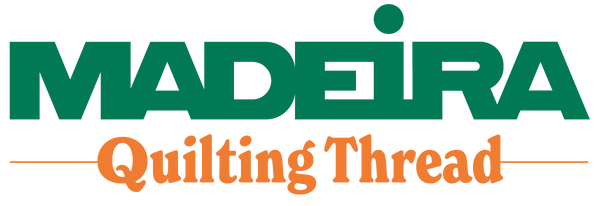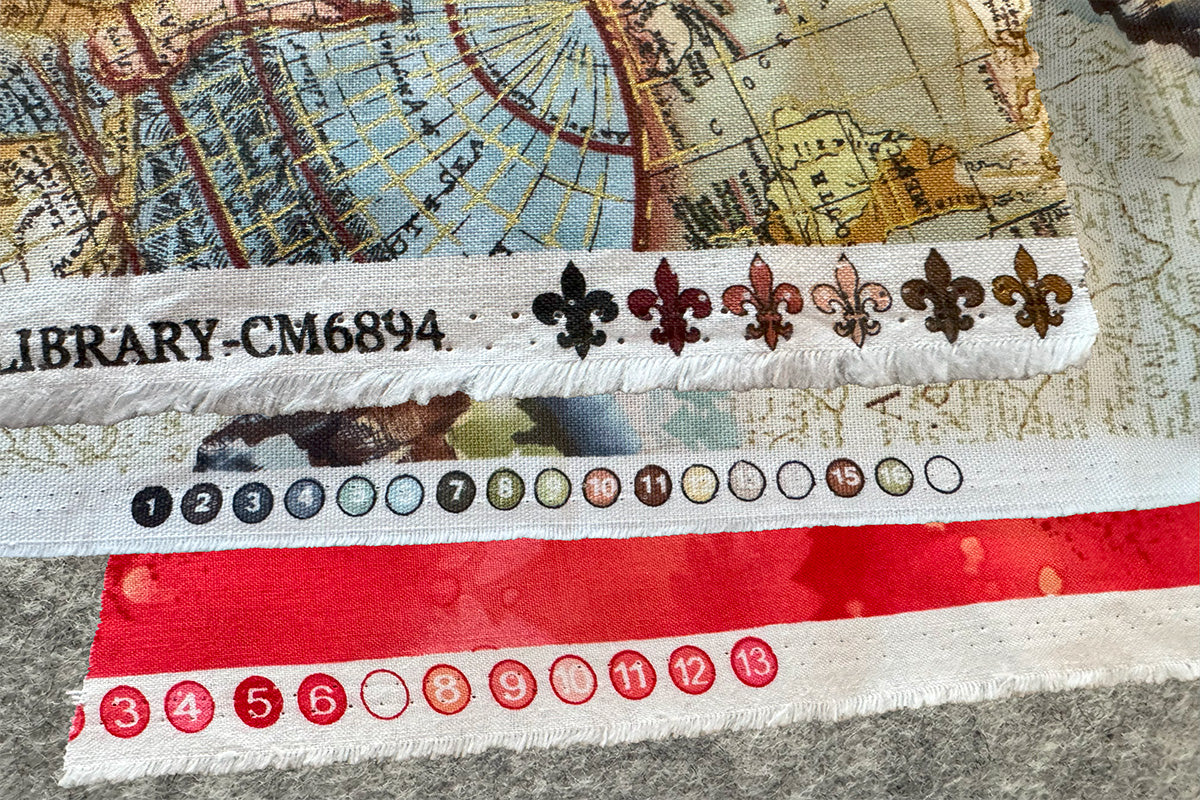Have you ever spotted those colorful circles or markings along the edge of your fabric and wondered if they have a purpose beyond decoration? As a quilter, you might be surprised to learn just how useful they can be!
These little details—often overlooked by quilters and sewists—play an important role in fabric production. Whether you're a seasoned quilter or just getting started, understanding selvedge circles can help you make more informed choices when selecting fabrics and coordinating thread colors for your next project.
In this post, we’ll uncover the mystery behind selvedge circles, explore their purpose, and share how they can actually be a handy tool for quilters like you!
What Are Selvedge Circles?
Selvedge circles—also known as color registration marks, printer's marks, or color dots—are the small, round dots printed along the selvedge edge of fabric. The selvedge itself is the tightly woven edge that prevents fraying, and while it’s often cut off and discarded, those tiny markings can provide useful information about the fabric.
While these marks are often circular, some fabrics feature squares, bars, or other shapes—each serving the same purpose.
These marks are primarily a quality control feature for fabric manufacturers, ensuring that colors are printed correctly and aligned as intended. But beyond their technical function, they can also be an unexpected resource for quilters.
Why Are Selvedge Circles Used in Fabric Printing?
At first glance, selvedge circles might just look like part of the design, but they actually serve a key role in textile production. Here’s why they matter:
1. Color Registration & Alignment
Think of fabric printing like offset printing in magazines or newspapers. Each color is applied separately using different printing plates, and they must be perfectly aligned to create a sharp, clear image. If one plate is even slightly off, the colors won’t line up correctly, causing a blurry or distorted print.
Selvedge circles work the same way—they help manufacturers ensure that each color layer is properly aligned. If the circles appear misaligned, it signals a printing issue that needs to be corrected before the fabric goes into production.
2. Color Quality Control
Each dot in the selvedge represents one of the specific dye colors used in the fabric’s design. This allows manufacturers to check whether all the colors have been printed accurately and consistently across the entire batch of fabric.
3. Brand Identification
Some fabric manufacturers include branded elements in the selvedge, such as logos, designer names, or collection titles. This makes it easy for quilters to recognize fabric collections, match pieces from the same line, or credit designers in their projects.
4. Quilting & Color Matching
This is where selvedge circles get really interesting for quilters. Since each dot corresponds to a color in the fabric’s design, they can be used as a guide for selecting coordinating fabrics. Whether you’re pulling fabrics from your stash or shopping for complementary colors, selvedge circles take the guesswork out of color matching!
The Changing Landscape of Fabric Retail
The world of fabric retail has been going through major changes, and quilters are feeling the impact. With some big-name stores closing their doors, sourcing high-quality quilting fabric is becoming more challenging.
Joann Fabrics Closure: A Major Shift
After more than 80 years in business, Joann Fabrics has officially announced that it will be closing all of its stores and going out of business. Following its second Chapter 11 bankruptcy filing within a year, this decision affects approximately 800 locations nationwide.
For many quilters, Joann has been a go-to destination for fabric, thread, and supplies. The loss of its stores leaves a significant gap in the retail market, forcing quilters to seek out new sources for high-quality materials.
The Decline of Quality Fabric Retailers
It’s not just Joann Fabrics—many small, independent quilt shops have been struggling to stay open. The rise of fast fashion, overseas production, and increasing operational costs have put pressure on local fabric stores. As a result, high-quality quilting fabrics are becoming harder to find in brick-and-mortar shops.
Tips for Sourcing Quality Fabric
With the retail landscape changing, it’s more important than ever to be intentional about where you source your quilting fabrics. Here are a few tips to ensure you’re getting the best quality materials for your projects:
1. Evaluate Fabric Quality
- Texture & Weight: High-quality quilting cotton should have a smooth, consistent texture and a substantial feel.
- Weave Consistency: Hold the fabric up to the light—if you see uneven spaces or thin areas, it may be a lower-quality weave.
2. Research Retailers
- Support Local Shops: Independent fabric stores often carry a curated selection of high-quality quilting cotton. Building a relationship with your local quilt shop can also give you access to exclusive fabrics and expert advice.
- Shop Online Wisely: If you’re buying fabric online, stick to reputable sellers. Look for clear fabric descriptions, customer reviews, and return policies.
3. Understand Fabric Content
- Natural vs. Synthetic: Natural fibers like 100% cotton are ideal for quilting because they’re breathable, durable, and easy to work with. Some synthetic blends may not hold up as well over time.
- Read the Labels: Fabric labels provide important details about fiber content and care instructions—always check before purchasing!
Final Thoughts
Selvedge circles are more than just a colorful border on your fabric—they’re a key part of the textile printing process and can even help quilters make better fabric choices. Whether you're using them to match colors or simply appreciating their role in fabric production, these little dots are worth a second look.
Looking for more quilting tips, fabric insights, and the best thread options for your projects? Join our community of passionate quilters today!



Leave a comment